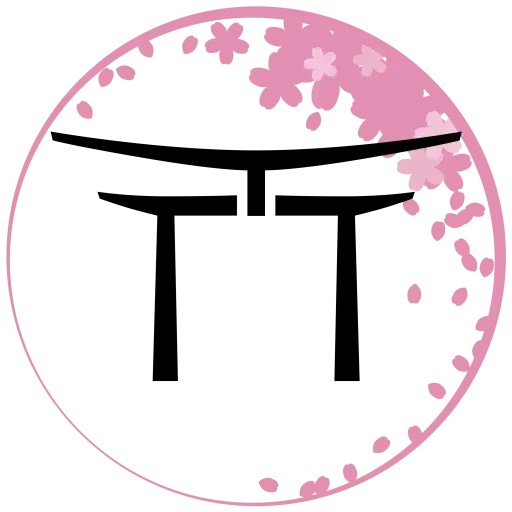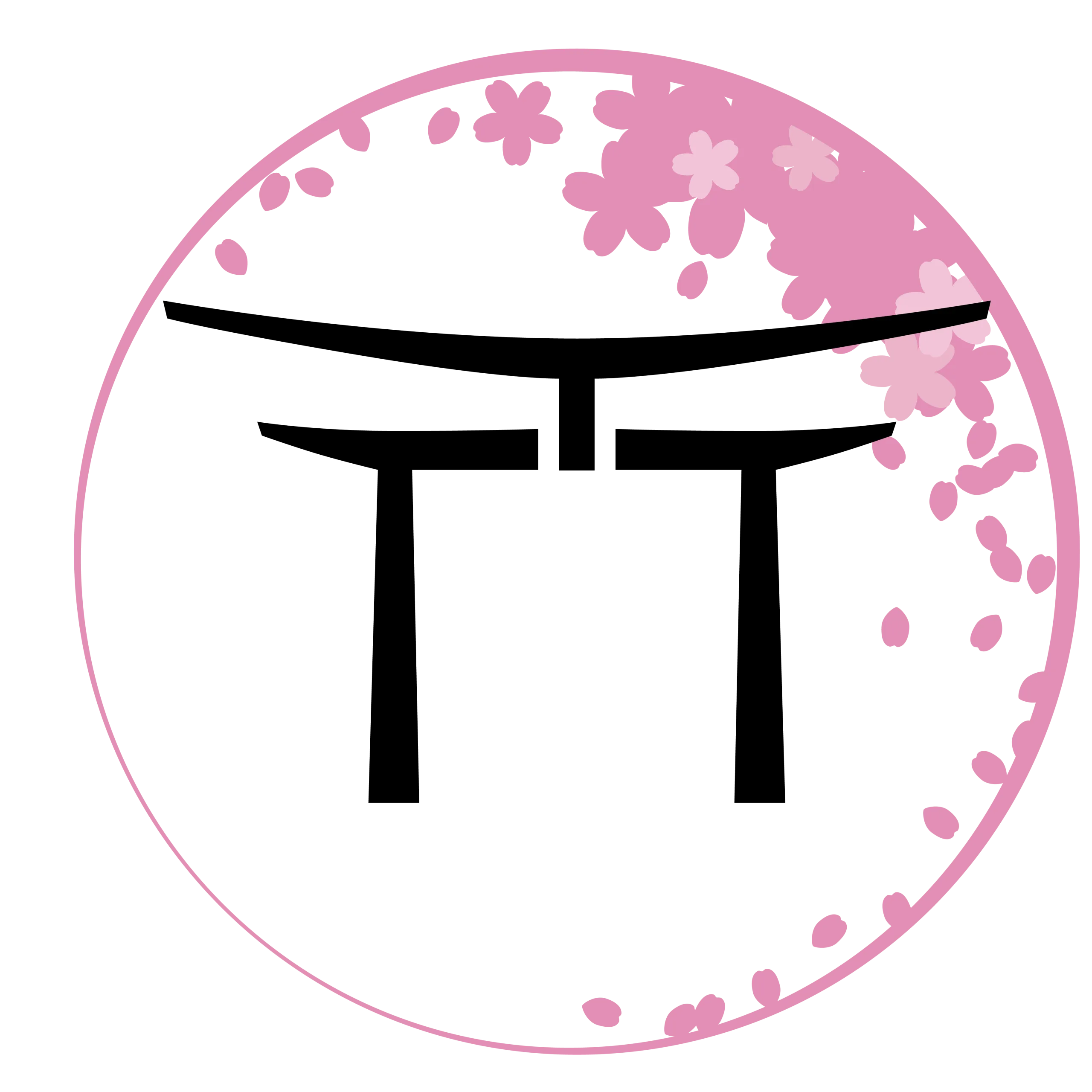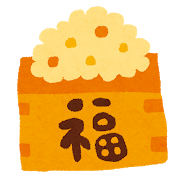Setsubun Festival in Japan: Banishing Demons for Good Fortune
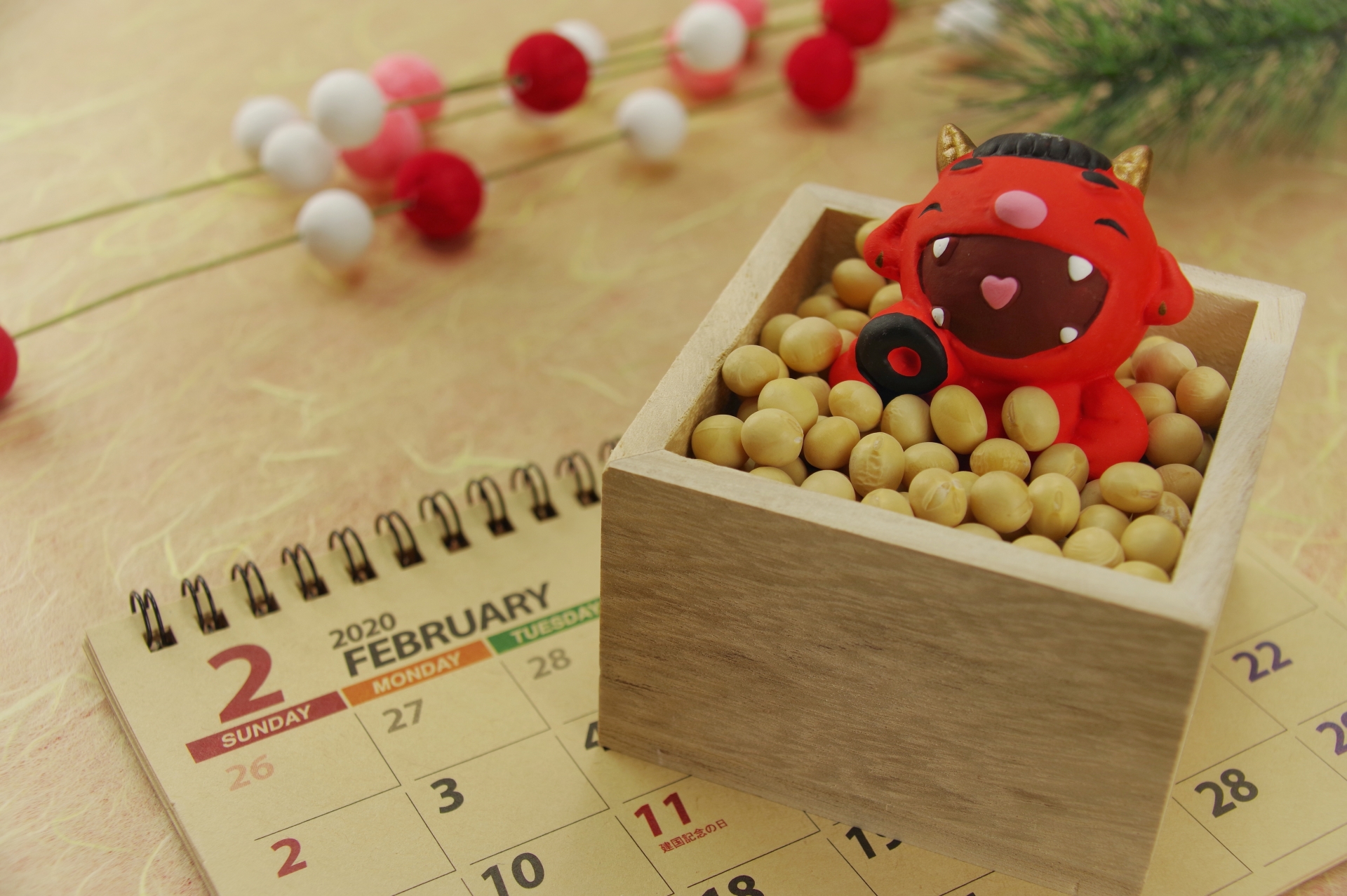
Last Updated on February 20, 2025 by Kay
This post may contain affiliate links, meaning I may earn a small commission on any purchases through those links at zero additional cost to you. Whatever I make goes to keeping this website running and I am forever grateful for the support. See my Privacy Policy for more information.
Every year at the beginning of February in Japan, people celebrate setsubun (節分), a festival to cast out demons to bring in good luck for the year.
Although setsubun is celebrated by Japanese people of all ages, this tradition is particularly enjoyable for children and I’ll share why in this article.
What Exactly is Setsubun?
Setsubun marks the transition from winter to spring according to the Japanese lunar calendar.
Originally, setsubun was celebrated four times a year to mark the change in seasons — in fact, the word setsubun means “the division of seasons”. However, sometime during the Heian period (794 to 1185), people began to celebrate setsubun only once a year, the day before winter turned to spring. This is because spring is the first seasonal division of the year and thus an important season in Japan.
Setsubun celebrates the start of spring at the beginning of February, although the exact date of setsubun is somewhat ambiguous and changes yearly. For instance, in 2025, setsubun will fall on February 2nd while in 2026, it will be on February 3rd.
On setsubun, people get rid of bad things in order to prevent something negative from happening (such as illness) and instead welcome the good. In the past, there was no real form as to what these bad things really were, so over time, people began to associate illness and misfortune with demons, which is why a demon or 鬼(おに・oni)now plays an essential role in setsubun.
So how do you cast away these bad things that are in the form of a demon? By throwing beans, specifically roasted daizu or soybeans, at it, of course! Apparently, demons are weak against soybeans in Japanese culture.
Bean(s) in Japanese is called まめ (mame), so the origin of beans being an ideal weapon to fight demons may come from 魔を滅する (annihilate the demon), which when shortened becomes 魔滅 or まめ (mame). Soybeans are also associated with warding off illness and disease.
In the past, soybeans were scattered outside around the house on setsubun and to this day are still scattered around shrines, which is called mamemaki. Some Shinto priests even throw soybeans and mochi at crowds of visitors who are eager to catch them for good luck.
We were lucky enough to witness this in Kyoto last year and my daughter got lots of treats, too!
View this post on Instagram
How to Celebrate Setsubun
Celebrating setsubun is quite easy and it’s likely that you can find everything you need at the 100 yen store, grocery store, or convenience store. 3 COINS also carries cute costumes and decorations for setsubun, but you have to get it fast because they tend to sell out by the end of January!
What You Need for Setsubun
A demon (鬼・おに・oni)

At home, male relatives (fathers, uncles, grandfathers, brothers, etc.) are usually volunteered for this role, but hey, now moms, aunts, grandmas, and sisters can be demons, too! Demon masks are easily found at any 100 yen store like Daiso.Soybeans (大豆・だいず・daizu)

The beans used in setsubun are 大豆 (だいず・daizu) or soybeans. These are called fukumame (福豆) or “lucky beans” and are roasted and sold in small triangular packages that can be easily and safely thrown by tiny hands. You can also buy these loose but the clean up can be annoying and soybeans are also a choking hazard for babies and young children.
Loose fukumame can be bought either in a plastic package or in a small wooden box called 枡 (masu).
A long “lucky” sushi roll (恵方巻き・えほうまき・ehoumaki)
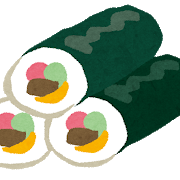
These rolls can be found at supermarkets or convenience stores around setsubun. They are traditionally filled with seven ingredients for good luck: egg, cucumber, eel, shrimp, shiitake, kanpyo, and sakura denbu (pink fish flakes).
What to Do on Setsubun
Once you have prepared, it’s time to cast out the demons to bring in good luck.
This is where your baby or toddler comes in by throwing the soybeans at the demon while chanting 「鬼は外、福は内!」(oni wa soto, fuku wa uchi!), which loosely translates to, “Out with the demons, in with the good fortune!”.
Of course, if your child is very young they may need help throwing the soybeans and will likely have zero idea what’s going on. As they get older, kids have a lot of fun pelting a poor adult with beans, although some kids might cry when they see the “demon”, even if the demon is their beloved parent.
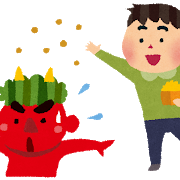
Although it may seem like a waste to throw food at someone — that is, a demon — leftover soybeans are meant to be eaten afterward. It is believed that eating a number of soybeans equal to your age (and plus one depending on the area of Japan you’re living in) will ensure your good health and that you won’t get sick easily.
However, do not give soybeans to babies or very small children as it is a choking hazard. I didn’t let my daughter eat the soybeans until she was three years old, but I always made sure to supervise her.
After having cast out the demon, it’s time to eat the 恵方巻き (ehoumaki). This tradition originated in Osaka but has now spread throughout Japan.
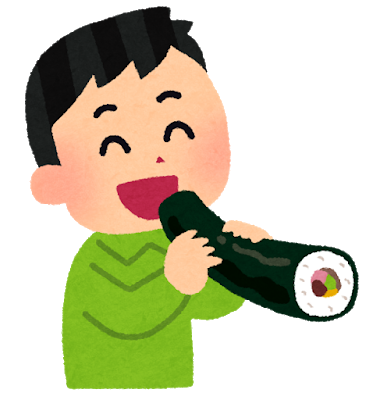 Every year, there’s a particular direction that one should face when eating the roll, which is called 恵方 (ehou), loosely meaning “lucky direction”. 2025’s lucky direction for setsubun is west-southwest.
Every year, there’s a particular direction that one should face when eating the roll, which is called 恵方 (ehou), loosely meaning “lucky direction”. 2025’s lucky direction for setsubun is west-southwest.
It’s important to also silently make a wish while eating the ehoumaki. Make sure not to cut the ehoumaki with a knife and instead eat it whole as if you cut it, you will also be cutting away any chances that luck may come to you during the year.
As mentioned earlier, setsubun falls on February 2nd this year. I’m certain that my daughter will enjoy throwing some soybeans at demons at her preschool and when she comes home, she’ll get to do it all over again with us.
It’s fun to see her “scream” when the demon (her father) comes and throw the soybeans at him. It’s truly something she has come to look forward to every year.
Baby A did a great job casting out a demon for the first time 👹 Hope this year brings her a lot of luck!🍀 pic.twitter.com/oJs0gbO2dJ
— Kay 🌙 (@tinyintokyo) February 3, 2020
Interested in learning about more Japanese traditions for children? Then check out some of these other articles!
